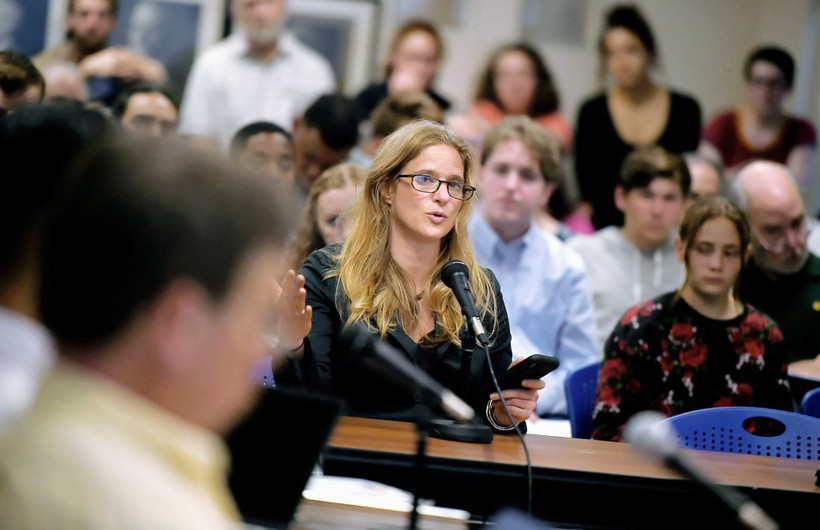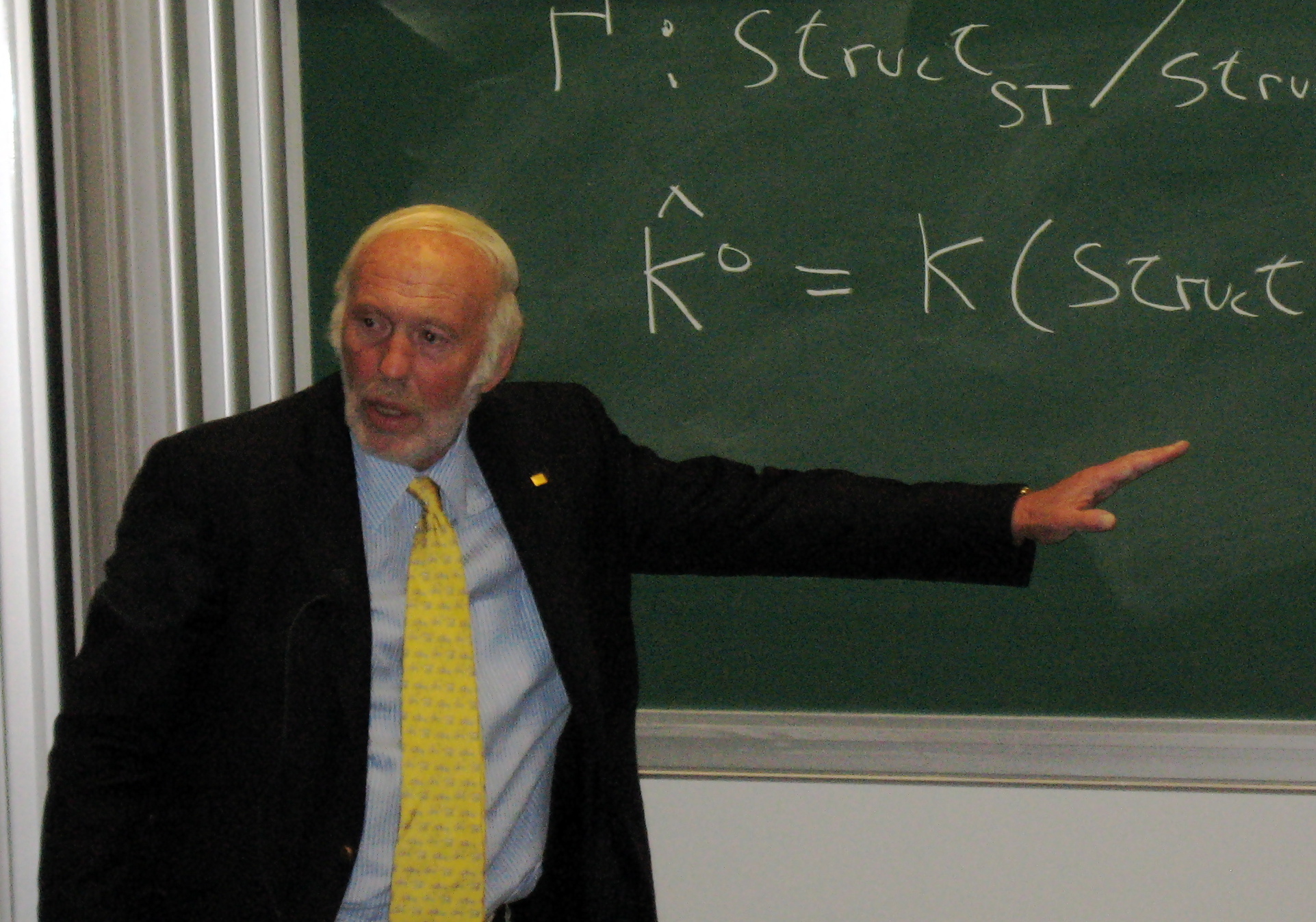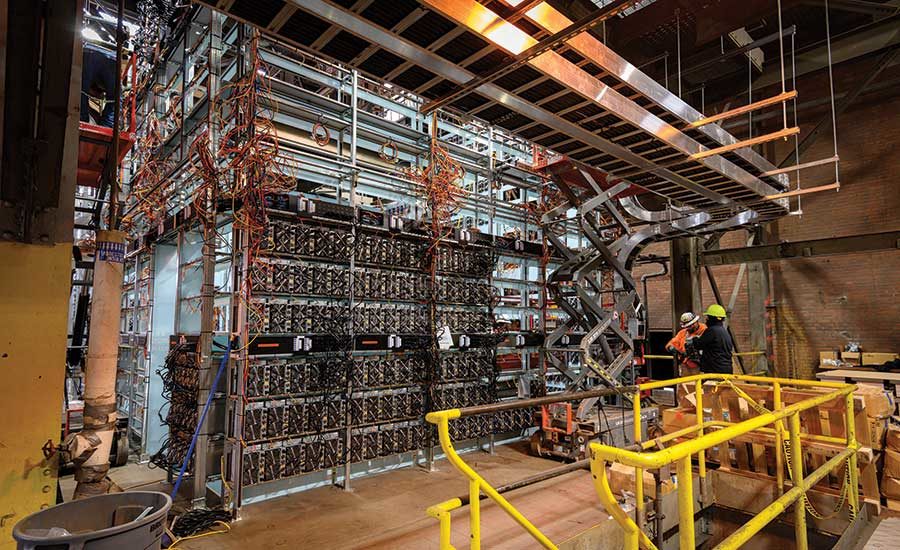Anticipating Pushback From Finance, Enviros Move to Regulate Energy-Intensive Crypto Mining
Founded by a major Cuomo donor, Renaissance Technologies is set to become a stakeholder in upstate mining operation that touched off backlash against Bitcoin.

Following a surge in power-hungry Bitcoin mining that set environmentalists scrambling, New York lawmakers have introduced multiple bills regulating cryptocurrencies late this legislative session.
Anna Kelles (D-Ithaca), a first-term Assemblymember from the Finger Lakes, is leading the charge with her push for a three-year state moratorium on energy-intensive digital asset mining.
The proposed halt follows a flurry of media coverage, touched off by a New York Focus investigation, of a Bitcoin mining operation at a gas-fired power plant on Seneca Lake. The Connecticut private equity firm that restarted the once-mothballed plant in 2017 has touted plans to ramp up its energy consumption.
Environmentalists warn that dozens of other aging plants could follow on the heels of Greenidge Generation Holdings by converting to data centers to reap huge mining profits. Such a trend would spike energy generation and torpedo New York’s ambitious plans to cut greenhouse gas emissions, they say.
With the Legislative session set to end June 10, Kelles is still finalizing the language for her bill and an identical Senate version carried by Sen. Kevin Parker (D-Brooklyn).
“The bill I’m creating actually supports cryptocurrency, as long as it doesn’t counter our efforts to reach state emissions reduction targets,” she told New York Focus.
But proponents of the moratorium worry that it could encounter opposition from finance firms, which have recently amassed large stakes in cryptocurrencies—including one hedge fund, founded by a major New York Democratic party benefactor, which is set to be a major shareholder of Greenidge.
“They’ll Probably Try to Kill It”
The push to regulate digital assets in New York comes amid a broader regulatory crackdown. Last month, China sharply curtailed its world-leading crypto mining sector, due to concerns about both fossil fuel energy use and air pollution—the same issues that make New York lawmakers wary of the practice. And in the wake of the cyberattack on the Colonial Pipeline that led to a ransom payment in bitcoin, the Biden Administration is weighing a range of new crypto regulations.
Miners of Bitcoin and other digital tokens use hundreds of specialized computers, known as “rigs,” to verify transactions and earn new coins.
Many cryptocurrencies, including Bitcoin, rely on a particularly energy-intensive method of authenticating transactions, which is known as “proof-of-work.” Kelles says proof-of-work operations — not all cryptocurrencies — need to be stopped, or at least paused.
Kelles says her bill is intended to be surgical, discriminating among cryptocurrencies based on their carbon footprint. That leaves maneuvering room for companies like Ethereum, which is working on a low-energy authentication method for its coin, Ether, Bitcoin’s chief rival.
But her legislation could find itself in the cross-hairs of financial heavyweights that have placed huge bets on Bitcoin. BlackRock, the world’s largest asset manager, has acquired 16 percent of a company that holds more than $3 billion dollars of Bitcoin on its balance sheet. Morgan Stanley recently bought more than 10 percent of that same company, MicroStrategy.
Long Island-based Renaissance Technologies, the world’s second largest hedge fund, amassed its largest position ever in crypto mining stocks in the first quarter of this year after buying $75 million in shares of Marathon Digital and $62 million of Riot Blockchain.
Renaissance also reported holding 4.58 percent of all shares in support.com, a small tech support company that is Greenidge’s intended merger partner.
Greenidge currently owns and runs a 19-megawatt Bitcoin mining operation at its plant in the Finger Lakes town of Dresden. It has been telling potential investors that it plans to boost its Bitcoin energy consumption to 85 MW in Dresden next year and to 500 MW at other sites by 2025.
When Greenidge completes its merger with support.com and becomes a publicly traded company later this year, Renaissance is set to be a major shareholder.
 Mathematician Jim Simons, founder of Renaissance Technologies. Gert-Martin Greuel
Mathematician Jim Simons, founder of Renaissance Technologies. Gert-Martin GreuelRenaissance founder Jim Simons is a key benefactor of the state Democratic Party. Over the past decade, the Simons family has contributed $3.4 million to the state Democratic Party, as well as $280,000 directly to Governor Andrew Cuomo.
Some fear that could spook Democrats in the Legislature away from supporting a proof-of-work moratorium bill.
“They’ll probably try to kill it,” Kate Bartholomew, chair of the Atlantic Chapter of the Sierra Club, said of investment firms with stakes in Bitcoin. “That’s why we need national and international pressure to stop them from killing the bill.”
Kelles said she had heard that the banking industry was “unhappy” with her bill. But she said it was hard to trace the financial and political interconnections that could be at work behind the scenes to block it.
Renaissance Technologies declined to comment.
Cuomo senior advisor Rich Azzopardi dismissed the suggestion that campaign contributions could sway legislators’ attitude, or the governor’s, toward the cryptocurrency bill. “I’m not engaging in insulting nonsensical conspiracy theories. Bills are considered on their merits,” he said.
1 Million Tons
Green advocates have been sharply critical of Gov. Andrew Cuomo’s administration for not requiring an environmental impact statement at Greenidge — either for its 2017 restart after a conversion from coal to gas fuel, or for its current plan to add hundreds Bitcoin mining rigs.
In the Finger Lakes, the plant’s water intakes from and discharges to Seneca Lake have been hot-button issues. But its air emissions have triggered the most concern statewide, since they could be illegal under New York’s new, much-heralded climate commitments.
An advisory panel on electricity production, tasked with helping to determine how New York will achieve 40 percent cuts from 1990 levels by 2030, recently found that the state should cut statewide CO2-equivalent emissions from gas power plants by 50 percent in the next nine years — down to 15 million tons per year.
“We can do that by quickly ramping up renewable energy sources,” said Robert Howarth, a Cornell ecology professor and member of the state’s main decarbonization committee. “But we can’t do it if we have Greenidge and Greenidge-like plants. The Greenidge plant at full capacity would — by itself — put out 1 million tons.”
Kelles agreed that Greenidge’s emissions jeopardize the state’s chances of reaching targets set in the 2019 Climate Leadership and Community Protection Act (CLCPA). But she’s even more worried about other companies that might follow its business model.
“It’s not Greenidge itself, but the potential trend it represents that provoked me to write the bill,” Kelles said. “If there is significant money backing this effort, then it just increases the likelihood [a trend will develop].”
The plant is now allowed to emit 645,000 tons of CO2e emissions annually under its Title V air permit, which expires in September. The state Department of Environmental Conservation is reviewing an application to renew it. EarthJustice and the Sierra Club claim the plant would emit 1 million tons if run at full capacity.
Howarth noted he has heard DEC Commissioner Basil Seggos “specifically [say] he had concerns about the Greenidge plant and that the DEC was looking very closely at it.
“I know that they would like to do the right thing. I know that [Seggos] and others on the CAC [Climate Action Council] would agree that [Greenidge’s Bitcoin expansion] is completely incompatible with the CLCPA.”
The DEC has been a defendant in Sierra Club lawsuits over Greenidge, and agency officials have been cautious in their public statements. Seggos didn’t mention concerns about Greenidge in comments to an online forum last month, saying instead that the state officials were “on track to achieve the critical milestones established in the CLCPA.”
In early April, EarthJustice warned Cuomo and the DEC that as many as 30 retired or retiring fossil fuel plants may soon attempt conversions like Greenidge’s, in pursuit of crypto mining riches.
Less than two weeks later, a Canadian Bitcoin miner proved their point. Digihost International, headquartered in British Columbia, revealed plans to buy a 55-megawatt natural gas-fueled plant in North Tonawanda, a city in New York near Niagara Falls.
The company already mines bitcoin in nearby Buffalo, reportedly collecting 105 coins in the first quarter of 2021. It has relied on state awards of cheap hydroelectric (42.7 percent of its energy mix) and nuclear power (41.2 percent) to keep its energy costs low.
Michel Amar, Digihost’s CEO, did not respond to emails seeking details on how the company obtained the valuable low-emission energy allocations.
Both Digihost and Greenidge have pledged to buy renewable energy certificates to offset emissions from their gas-fueled generation.
Two days after a market-rattling tweet last month by Tesla CEO Elon Musk announcing that bitcoin could no longer be used to pay for his electric cars due to its environmental costs, Greenidge pledged to become “carbon neutral” by June 1.
“By taking the bold and unique step of making our cryptocurrency mining fully carbon neutral immediately – as opposed to at some distant date in the future — Greenidge is once again leading in environmental efforts,” Jeffrey Kirt, CEO of Greenidge Generation Holdings, said in a press release.
Many environmentalists argue that carbon offsets are an inadequate, corruption-riddled substitute for actually cutting emissions. And the CLCPA specifically states that the electric generation sector is not eligible for offsets. Furthermore, even in sectors where offsets are permitted, the state hasn’t yet established rules for which offsets will be allowed. Offsets from outside an emitter’s county probably won’t count, Howarth said.
Greenidge spokesman Michael McKeon did not respond to emailed questions about Kelles’ moratorium bill or company plans, if any, to seek either green energy sources or an alternative to proof-of-work authentication.
A Growing Trend?
Kelles, 47, who holds a doctorate degree in nutritional epidemiology, said she fears that if her moratorium bill fails to pass this year, other crypto miners will follow the lead of Greenidge and Digihost by acquiring and converting old fossil fuel power plants.
In a separate bill, Kelles is seeking to fend off that possibility by banning the transfer of pre-2012 plant permits to new owners.
Parker, who is chair of the Senate Energy Committee, is sponsoring a related bill that would require state officials to study the viability of using renewable energy to power cryptocurrency mining operations.
On the moratorium bill, Kelles’ effort to narrowly target proof-of-work authentication recognizes that not all forms of cryptocurrency mining are necessarily energy-intensive.
To verify that a digital transaction is not fraudulent, cryptocurrencies rely on a worldwide network of code-breaking computers that compete to solve complex algorithms. The winning solution can only be reached by brute force computation, which requires rows and rows of mining rigs, and enough electricity to power them.
Solving an algorithm puzzle is difficult, but once an algorithm is solved, others on the network can easily verify that the solution is correct. The winner who comes up with the right answer earns new digital coins.
 Mining rigs at the natural gas-powered plant owned by Greenidge Generation Holdings.
Mining rigs at the natural gas-powered plant owned by Greenidge Generation Holdings.Both Bitcoin, with more than $1 trillion USD in circulation, and Ethereum, with about $480 billion in circulation, currently rely on proof-of-work authentication.
Dozens of smaller cryptocurrencies compete with those giants, and some use alternative forms of transaction verification that run on relatively little electricity.
In fact, as Bitcoin has come under heightened criticism, Ethereum has hinted that it is on the verge of switching to an authentication model called “proof-of-stake,” which it says would require a fraction of the energy used by proof-of-work.
Meanwhile, Bitcoin miners and their investors are looking to cash in on the still-dominant currency’s profit opportunities.
In touting its plan to go public, Greenidge told potential investors its average net cost to mine one Bitcoin was $2,869 for the 12 months that ended this February. As the price of bitcoin surged, the company’s net profit on one coin jumped from about $6,500 in February 2020 to about $30,000 a year later. At Bitcoin’s peak price of nearly $60,000 earlier this month, Greenidge’s per-coin profit margin exceeded $55,000.
Others in New York are eager to break into the crypto market. And they don’t necessarily need to buy a power plant to set up shop. Mainly, what they need is cheap energy.
That can be obtained by winning state allocations of low-cost energy — typically hydropower — in exchange for providing jobs or capital investment. The ReCharge New York economic development program provides 910 megawatts of cheap power — half of it hydro — and offers it under jobs-conditional seven-year contracts.
For example, Beowulf Energy has proposed a pair of upstate data centers: a 250-MW facility at Somerset station, a retired coal plant in Barker on Lake Ontario, and a 100-MW operation at Cayuga station in Tompkins County. In 2019, Somerset won a 10 MW allocation of hydropower, while Cayuga won 2 MW.
Beowulf continues to seek much larger allotments for its plants, and Kelles said Somerset is in line for an additional 90 MW of hydro. The company has also floated the idea of a 140-MW solar plant on the site.
Meanwhile, Beowulf entered a partnership with Marathon Digital to use power generated by a 119 MW coal-fired plant in Montana to mine Bitcoin.
Since then, Marathon Digital has said it is working with Beowulf to open a “renewable energy-powered data center in the northeastern United States.” Renaissance, the Long Island hedge fund, was recently listed as Marathon Digital’s third largest shareholder. Marathon Digital and Beowulf did not respond to emailed questions.
Bartholomew said the Sierra Club and other groups have invited several international journalists to a planned rally at the DEC’s regional office in Avon on June 5 to draw attention to the global importance of the moratorium bill.
“This is not going to be swept under the rug,” she said.


